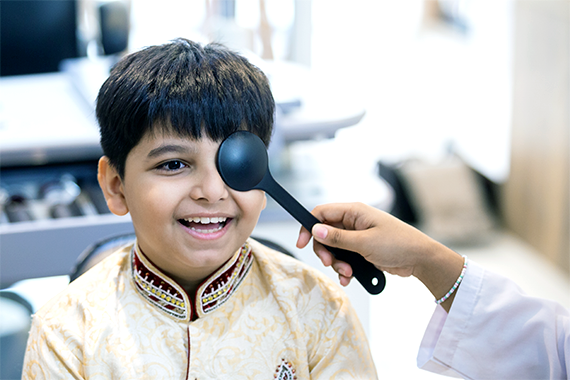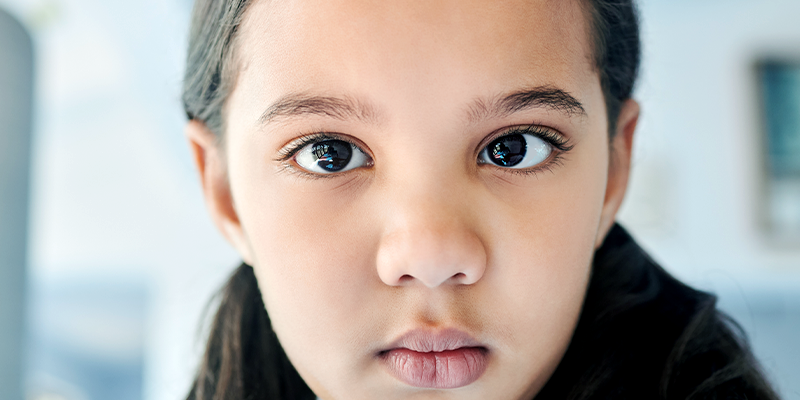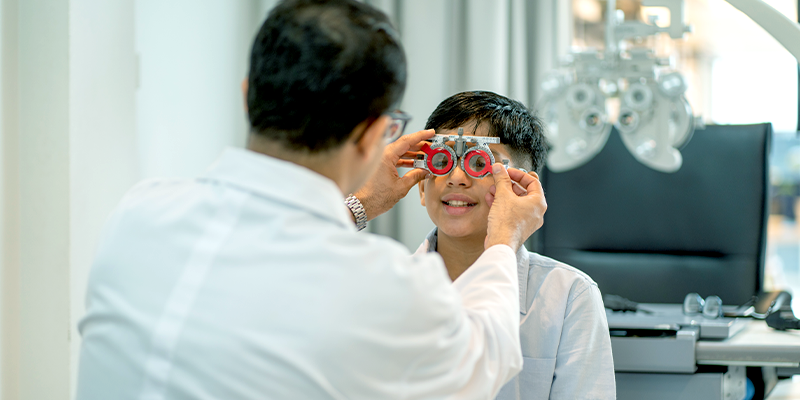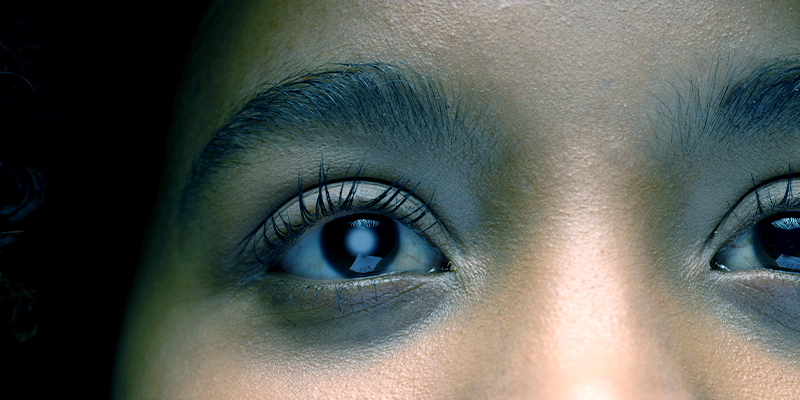Amblyopia, commonly known as lazy eye, is a visual development disorder where one eye fails to achieve normal vision, even with corrective lenses like glasses or contact lenses. This condition typically begins during infancy or early childhood and results when the brain and one eye do not work together properly. Over time, the brain starts favoring the stronger eye, leading to reduced vision in the weaker eye. Amblyopia is the leading cause of vision problems among children and, if left untreated, can lead to permanent vision impairment.

The symptoms of amblyopia can be subtle and may not be immediately noticeable, especially in young children who might not be aware of the problem. Key symptoms include:
The most common sign of amblyopia is blurred vision in one eye, which cannot be corrected with glasses or lenses.
Amblyopia is often associated with strabismus, where the eyes do not align properly and may turn inwards or outwards.
Affected individuals may squint or close one eye when focusing on something, especially in bright light.
Trouble perceiving depth or judging the distance of objects is another symptom, as depth perception relies on both eyes working together.
Children with amblyopia might frequently rub their eyes, indicating discomfort or strain.
To compensate for the lack of vision in one eye, a child might tilt their head in an attempt to see better.
Early diagnosis and treatment of amblyopia are crucial for preventing long-term vision loss. It is recommended to schedule an eye examination if:
You notice any of the above symptoms in your child.
Your child has a family history of amblyopia, strabismus, or other eye conditions.
A pediatrician or school screening suggests a potential vision problem.
Your child experiences difficulties in reading, drawing, or other activities that require focused vision.
Amblyopia develops when there is a disruption in the normal visual development process. Several factors can contribute to this condition:

Misalignment of the eyes, where one eye may turn in, out, up, or down, causing the brain to favor the properly aligned eye.

Significant differences in refractive errors between the two eyes, such as nearsightedness (myopia), farsightedness (hyperopia), or astigmatism, can cause the brain to rely on the eye with better focus.

Anything that obstructs the line of sight in one eye, such as cataracts, droopy eyelids (ptosis), or a corneal scar, can lead to amblyopia.

This occurs when something physically obstructs light from entering and focusing within an infant's eye, such as a congenital cataract, leading to poor vision development.
Several factors increase the risk of developing amblyopia:
Children born prematurely or with low birth weight have a higher risk of developing amblyopia.
A family history of amblyopia, strabismus, or other eye conditions increases the likelihood of a child developing the condition.
Children with developmental delays or neurological conditions are at greater risk.
Smoking or alcohol consumption during pregnancy may increase the risk of amblyopia and other vision problems in the child.
Preventing amblyopia is largely dependent on early detection and intervention. Here are some key prevention strategies:
Ensure that children receive regular comprehensive eye exams starting at a young age. Early detection is key to effective treatment.
Keep an eye on your child’s visual development, especially if there is a family history of eye conditions.
Addressing refractive errors with glasses or contact lenses early can help prevent amblyopia from developing.
Conditions such as cataracts or strabismus should be treated promptly to prevent amblyopia from occurring.
If your child is diagnosed with amblyopia, it is crucial to follow the prescribed treatment plan, which may include corrective lenses, patching, or vision therapy.
Amblyopia, or lazy eye, is a common but serious condition that can lead to permanent vision impairment if not treated early. Understanding the symptoms, causes, and risk factors can help in the timely identification and treatment of amblyopia, ensuring better visual outcomes. Regular eye examinations and prompt treatment of underlying conditions are essential in preventing this condition. If you suspect that your child might have amblyopia, it is important to consult an eye specialist for a thorough evaluation and appropriate intervention.
While Shree Ramkrishna Netralaya is your top choice for eye care in Mumbai, you may also consider our other reputable clinics and hospitals near you.
Address:
201 & 202 Elmer #Plot #563, Central Avenue, Corner of, 11th Rd, Chembur, 400071
Phone: 082917 14838
Timing: Mon-Sat- 10 a.m. To 8 p.m.
Address:
Near Risk Care Hospital, Near Makhamali Talao, LBS Marg, Thane, W, Mumbai, Maharashtra 400601
Phone: 02225441139
Timing: Mon-Sat- 11 a.m. To 8 p.m.